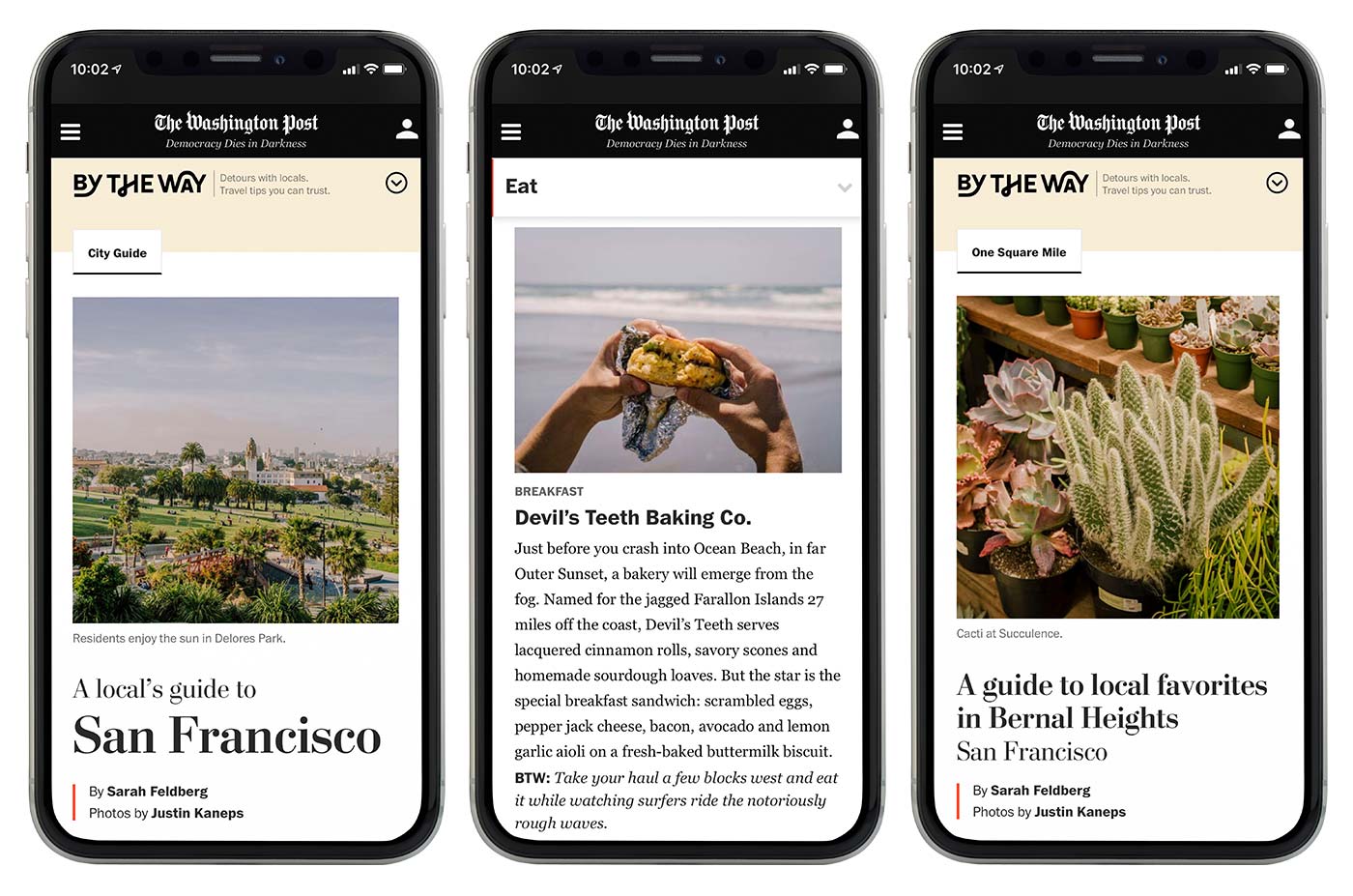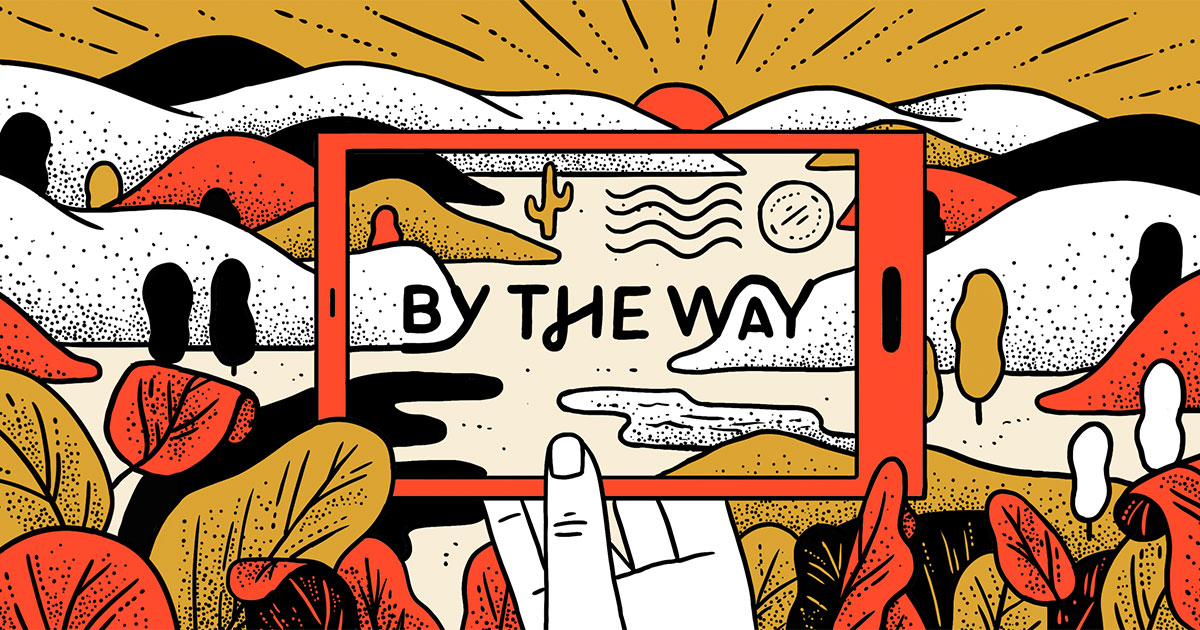When in Rome, do as the Romans do. But what do the Romans do?
That is essentially the question The Washington Post’s new travel site, By The Way, seeks to answer. By The Way dispenses with the usual travel writing formula — sending some lucky reporter around the globe to “discover” locations and report back in cleverly written pieces — and instead relies on the people who actually live there to tell their own stories, share their favorites and invite travelers to peek into their lives.
In By The Way’s guide to Rome, then, you’ll find less about the Colosseum and Pantheon, which travelers already know about and locals probably don’t visit, and more about the four-generation neighborhood coffee bar with the old-school Roman dolci. And the guide to Paris only brings up the Eiffel Tower long enough to say that there is plenty going on far away from its shadow.
Rome and Paris are among By The Way’s first 50 city guides — 25 domestic, the rest stretching across every continent but Antarctica — each of which includes neighborhoods away from the tourist zones, joints where the locals eat and things to do that you probably wouldn’t find on your usual visitor’s guide. Perhaps buoyed by the success of travelers like Anthony Bourdain, who famously shunned the trodden paths in favor of more authentic experiences, the Post thinks going local is a winning formula.
“Travelers who are looking for an immersive experience want to feel connected to a place and its people and the culture,” editor Amanda Finnegan told Poynter. “We wanted to do something like this for travelers because we feel like it’s really how people are traveling these days.”
[the_ad id=”667826″]
The site also includes news and tips about travel, from unpacking the situation in the Dominican Republic in the wake of a series of unexplained tourist deaths to how to ditch an itinerary and discover a city on your own.

By The Way launched on June 17 with a full staff of 12 that includes Finnegan, designers, reporters, an audience editor, a copy editor and a photo editor — but most of the city guides are written by people who live there, some of which come through the Post’s Talent Network of freelancers.
“It was really important for us to use locals in the cities as much as we could because we felt like locals really have the insider perspective on cities,” Finnegan said.
Finnegan first pitched the idea in March 2018. At first, the plan was to expand the Post’s travel coverage and publish more digital features. Travel tips were part of the equation — “things like how to pack a bag or the best gear, kind of a Wirecutter-esque thing for travel,” Finnegan said. Then she started talking to people, eventually sending out a form to friends who are big travelers.
“I asked, ‘What do you like? What’s out there that you like? What’s missing?’” she said. “I heard the same themes about how some travel advice out there you can’t really trust, or it feels really general, or it feels more like it’s for an affluent audience and I can’t find something that fits the way I like to travel.”

In the year after her initial pitch, the focus became clearer — more local, more unexplored territory. At first, it seemed like the audience would be millennials, “but when we told our readers about the concept it resonated across all age ranges,” Finnegan said. That reader feedback helped By The Way become one of the Washington Post’s biggest initiatives this year.
[the_ad id=”667872″]
“We reviewed about a dozen projects last year to see which ones we wanted to invest in. This one tested off the chart with our readers,” said managing editor Emilio Garcia-Ruiz, who oversees the Post’s development, implementation and execution of digital strategy. “It really became a no-brainer for this one to be the one we would pursue.”
“It became this much bigger thing and we’re so happy it did because … it’s really so wonderful to hear people discovering all these cities and places and hear the writers of these cities falling in love with their cities again,” Finnegan said, noting that she wasn’t exaggerating: “I’ve been hearing that from writers and it’s an unexpected joy.”
How does the Post plan to pay for By The Way’s dozen-strong team and network of freelancers? “This concept tested really well with our audience and also shows great promise from our advertisers and we are confident of gaining major sponsorship support,” Garcia-Ruiz said.
[the_ad id=”667878″]
By The Way first launched with 50 city guides and a handful of tips and news stories about travel. Two days later it published its first newsletter, a visuals-driven combination of links to stories, short looks at city guides and a giveaway for a handsome package of postcards. Next up will be Instagram-only features to help By The Way build a community of travelers, followed by more videos (its first was about how a biking camper packs for his trips), more tips and news stories and more city guides — for both big cities and smaller, more regional ones.
In the meantime, I asked Finnegan for a travel tip that everyone should know.
“Don’t get a table in a restaurant, pull up a seat at the bar and talk to the bartender and hear their stories and get their recommendations. It seems like the simplest thing, but talk to your Uber driver, your Airbnb host, your bartender,” she said. “Sometimes when we’re traveling we’re so much in our own thing that we forget the locals around us. They have great ideas and recommendations, and that’s what this whole thing is about.”







